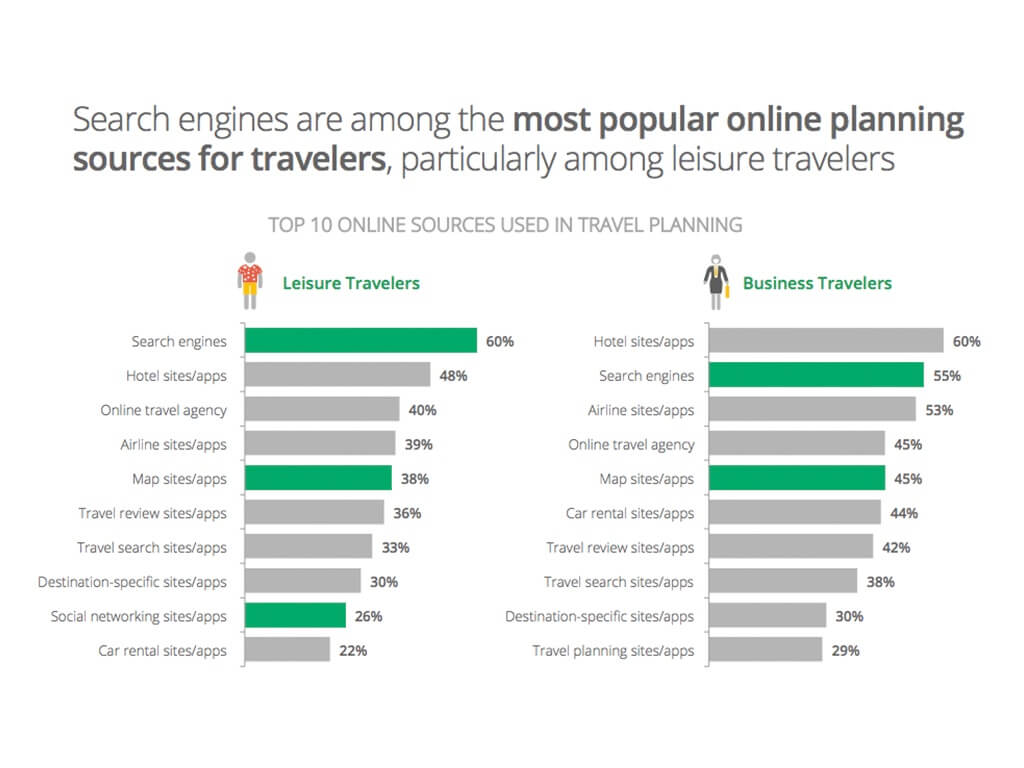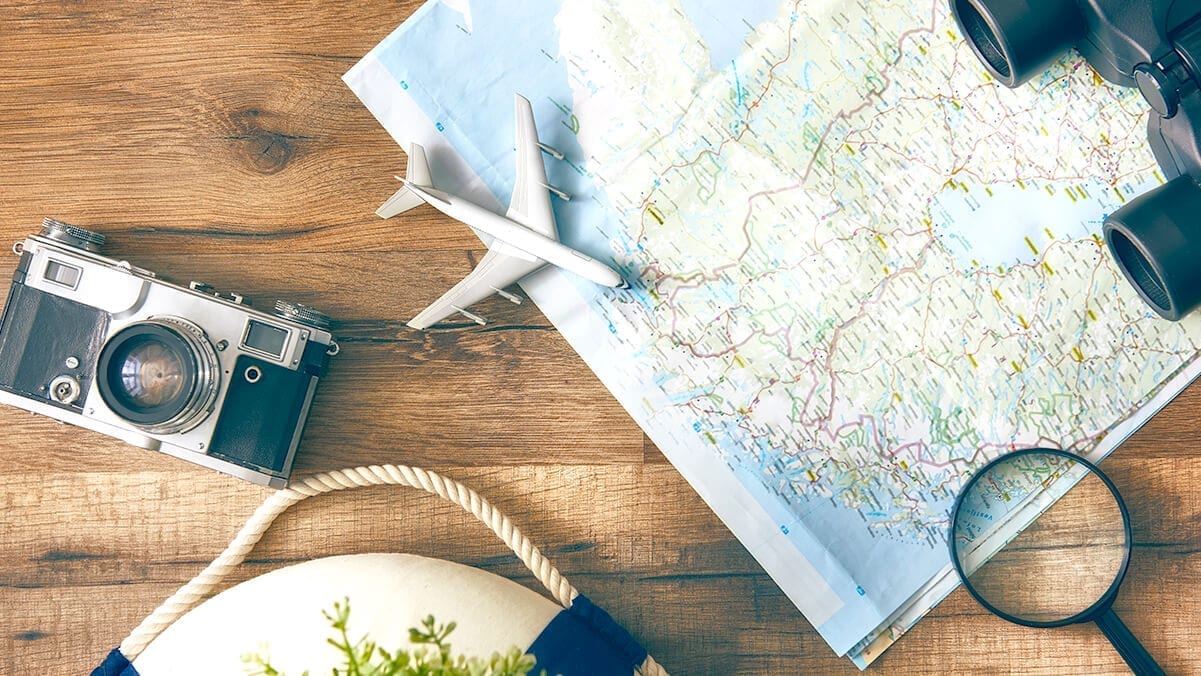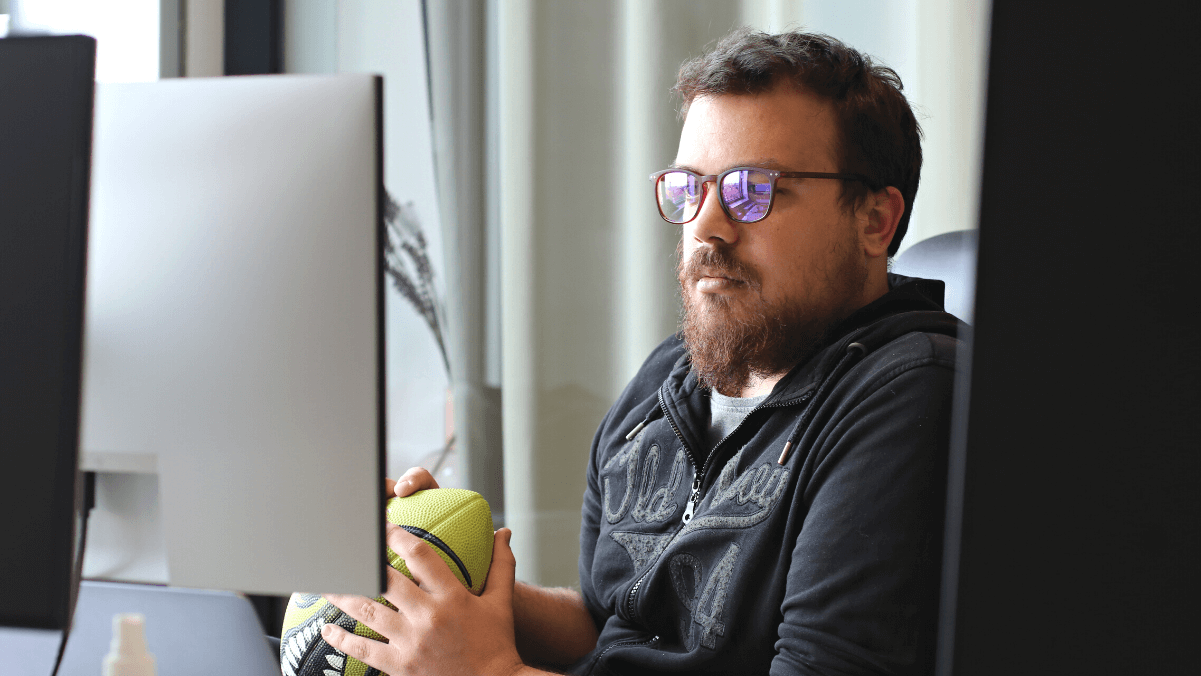When you are trying to run a tourism-based business, it is essential to attract customers because they’re your bread and butter. Today, tourists are making decisions based on their search and experiences of others on the Internet. In this article, we will give some tips how to get your share of online traffic and more customers to boost your business.
Search Engine Optimization should be part of every professional website developed on the Internet, especially when it comes to tourism where the business potential of traffic coming through search engines is relatively high. The purpose of optimizing your website is to improve its rankings on search engines’ result page (SERP) and improve its visibility so that it drives more organic traffic.
When it comes to tourism, travel and hospitality, the competition is extremely high as the sheer volume of tourists using organic search and conversion potential of that traffic is astonishing. Bearing that in mind, having a good SEO strategy is of utmost importance in the tourism industry.
When planning a trip, almost two out of three leisure travelers turn to search engines to collect information. This means that online marketing rules the tourism sector.
 Source: Google’s 2014 Traveller’s Road to Decision
Source: Google’s 2014 Traveller’s Road to Decision
Analyze the competition and take advantage of opportunities
The first step towards optimizing your organic presence via SEO is to analyze your competition by thoroughly exploring your niche. For example, if you’re a hotel or a restaurant in Dubrovnik you should look for websites that rank best for keywords “hotel in Dubrovnik” or “restaurants in Dubrovnik”, depending on your target group and branch. By examining their pages that rank for relevant terms, you’ll be able to determine what makes them rank for those terms and that should help you in building your SEO strategy.
What we usually see, when it comes to tourism, is a complete lack of elements that are fairly easy and quick to implement and have big potential when it comes to increasing organic visibility, such as proper title tags, keyword-rich URLs etc. It is hard to expect to rank for a certain keyword in regards to a certain location if you never mention the keyword at all.
A huge chunk of organic traffic goes to big brands like AirBnB and booking.hr (popular OTAs – Online Travel Agencies for accommodation booking), but you should seek your opportunity at category terms search as they are 2 times more searched than brand terms.
When it comes to the most lucrative keywords, the competition is oftentimes extremely high. Not only do you compete with other businesses, but also with these big brands and positioning for them, given the resources required, is not worth the hassle. With that in mind, it is important to realize that most people browse the internet with the sole intent to inform themselves about a particular topic, meaning that there is a huge opportunity for you to target long-tail keywords with a well thought out content strategy.
Keep it simple and informative
Organic visibility, especially the first couple of positions, is important as 95% of natural clicks come from page one of Google, Yahoo and Bing. When travelers search with the intent to book, they browse through one to five sites. If you do get an opportunity to be one of the sites within the consumer’s selection set, make sure to have a website experience that delivers relevant information. A lot of traffic and great SERP position won’t do you any good without good User Experience. If visitors can’t find what they are looking for on your site or it’s not what they expected when reading the title and description they will bounce back, leaving you without potential conversions.
Give your website visitors relevant and quality information about your hotel or restaurant, they will appreciate it. Determine your KPI on the website, your goal – what you want your customers to do. If it’s a hotel, then you should make booking form friendly and functional. Only ask information that you really need (remember, every field they must fill is one step more they have to take and one more filter in your funnel). No one wants to fill forms that go on forever.
If you are a restaurant, give your customers a menu they can view and contact they can use.
SEO is not complete without UX. Completed goals on your website are called conversions, more conversion means more customers for you. Optimize your site so it converts more.
Mobile-first is a must
Google announced that first sites are being moved to the mobile first index in March 2018. That means that every page without responsive design will not be shown on search results or will be moved down in results opposed to responsive websites.
“In the past year, conversion rates have grown 88% on mobile travel sites. – November 2015” Source – ThinkWithGoogle
OTA-s are receiving 45% of bookings through mobile devices in Q4 2017. (Source: http://www.traveltripper.com/blog/important-mobile-booking-stats-for-hotels-in-2018/)
Taking into consideration the statistics of mobile searches, it is very important to have a responsive webpage. The amount of time spent on optimizing and designing a desktop web should be equal to time spend on mobile web. Create a fast and frictionless experience on your mobile website.
Technical optimization
Your website shouldn’t just be pretty, it should be fast and always available. Every second more to load means fewer customers and conversions on the website. Loading time makes a big factor to page abandonment. In a high competitive branch like tourism, customers won’t hesitate to go back where they came from and continue searching. Mobile website users expect UX on a mobile phone to be comparable to desktop or laptop.
“A 1-second delay in page response can result in a 7% reduction in conversions.” Source – Kissmetrics
Use your traffic in the best way and keep your website fast, especially on mobile. Keep your visitors and yourself happy.
“73% of mobile internet users say that they’ve encountered a website that was too slow to load.” Source – Kissmetrics
Local SEO – put your business on a map
Since tourism is so much based on a particular location, a useful tip for your business is to set the Google My Business page. With this, you can show a lot more business information by adding a mark on Google maps, add images on SERP and get you some reviews that can boost your visibility.
Using Google My Business enables you to fully use Google’s capabilities in order to display business details so that the visitors can see the most important information directly in the SERP.

This is especially important when it comes to tourism. Imagine a tourist walking through the Old town Dubrovnik wanting to find some great restaurants to eat. They pick up a mobile phone, search for “restaurants in Dubrovnik” and get information like this. That user journey, also called a micro-moment, is an intent-rich moment that yields a significantly higher conversion intent.
These kinds of moments can happen during planning, booking and traveling. In situations such as these, people reach for devices that can help them find what they want. To avoid unnecessary clicks and browsing, tourists tend to use the capabilities of smart search results to the fullest. Make most out of this and create Google My Business to give your potential customers all the information they might need.
Image optimization
Optimizing images for organic search is oftentimes overrated, especially when you consider the input-output ratio. However, few niches can benefit from having optimized images as much as tourism can. When planning a trip, travelers often search destination images in their search engines to explore places they wish to see. By optimizing images, you increase the already high potential of image search. Not only do you draw more organic visits that way, but, as our experience has shown time and time again, that is one of the highest converting traffic sources out there.
Search Engines, however, are still just algorithms so they use alt tags and other information on your site to determine what the images are about. Fill out your image alt tags with a description of what they are about and use targeted keywords. Also, it’s advisable to name your image reasonably and related to alt tags. Optimizing your images can only help your visibility and attract more customers to visit your page.
Also, remember to take care of image size and loading times, especially when it comes to the tourism industry where tolerance towards slower loading speeds seems to be particularly low. Often people make mistakes by putting large images on the site which then affects website loading speed. Keep your image size low so they don’t hurt your rankings and UX, especially on mobile devices.
Be patient
SEO is a long and continuous process that requires time and effort. Due to high competition in the tourism industry, it will require even more time and some other creative actions to fulfill your expectations of online visitors.
At the end of the day, SEO always gives something back if it’s done correctly and thoroughly. At Degordian, we look at SEO from a holistic point of view and we combine SEO with Conversion Rate Optimization and UX in order to drive much-needed traffic and revenue. If your website is converting then it means that is working and visitors on our site are doing what we want them to do.
If you are in need of a professional in a field of optimization, please do contact us through the online form, e-mail or phone. We will be happy to respond and make your website relevant and your business thrive.



